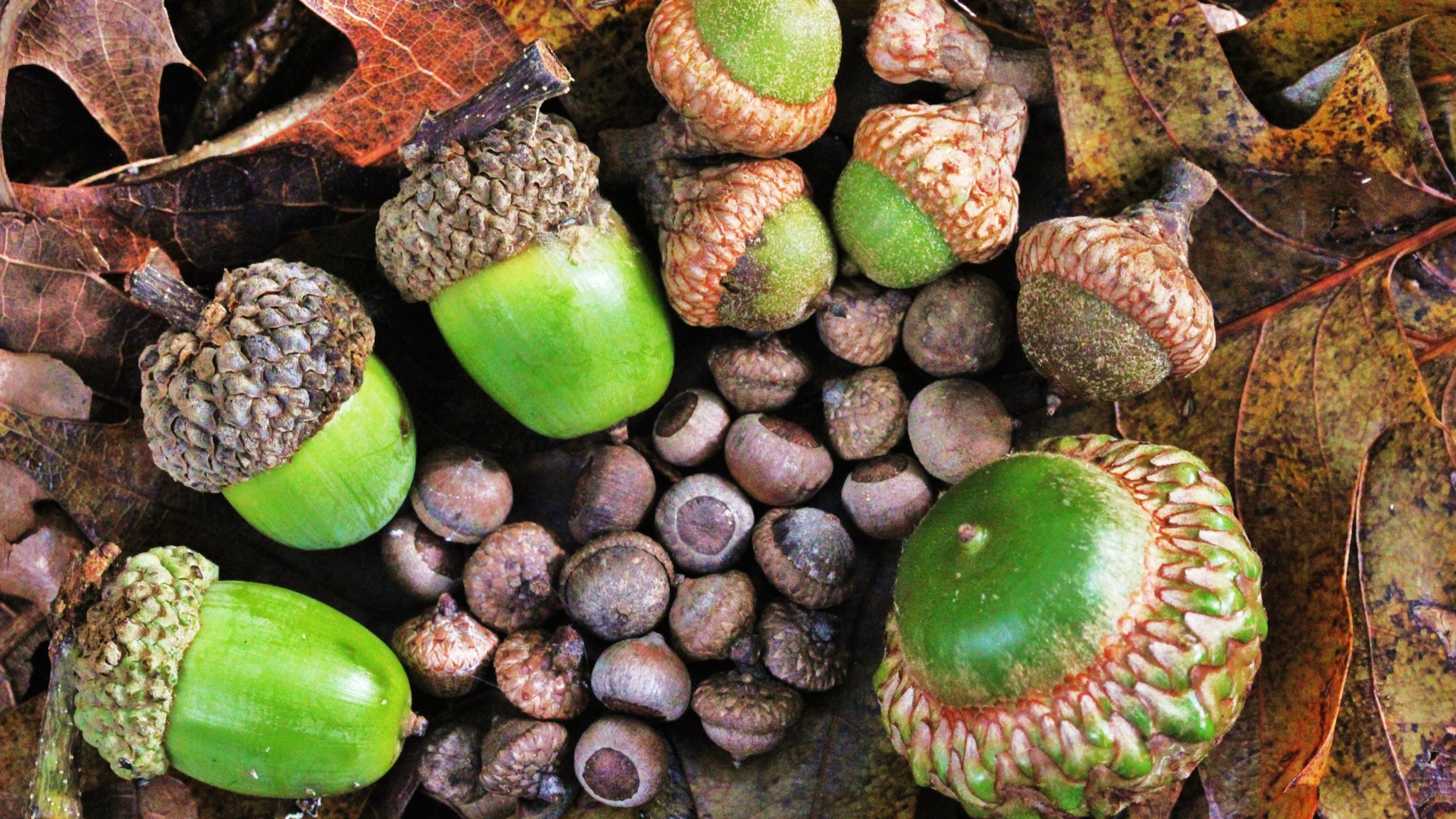WILD GEORGIA: Acorns crucial for wildlife survival in winter

While many of us will be admiring the breathtaking red, yellow, bronze and gold hues of oak trees over the next few weeks, a wide array of Georgia’s wild creatures will be relying on the oaks for a more crucial function: acorn production.
Of all the nuts, fruits, berries and other wild foods produced each year by the state’s native flora, nutrient-rich acorns are the most important. Black bears, white-tailed deer, wild turkeys, squirrels, mice, foxes, raccoons, chipmunks, bobwhite quail, woodpeckers, blue jays and dozens of other species — all rely on acorns to help see them through fall and winter.
The health and abundance of wildlife — especially bear, deer and turkey — often rise and fall with acorn availability during those seasons. When available, acorns are the most preferred white-tailed deer food during the cold months, composing half or more of the animals' diet. When acorns are plentiful, deer may eat little else other than acorns until the nuts are depleted in late winter.
During years of low acorn production, black bears may roam farther afield in search of food and become nuisance animals in urban areas. (Generally, bumper acorn crops occur every three to four years.)
So important are acorns for wildlife in Georgia’s mountains and Piedmont regions that the Georgia Department of Natural Resources conducts annual surveys in early September to forecast acorn availability and its impacts on wildlife. Adam Hammond, a DNR wildlife biologist who helps conduct the surveys, tells me that this fall’s acorn crop looks like a good one overall.
The acorn, a type of nut, is, of course, the seed of the oak tree. Georgia’s more than 30 species of oaks all produce their own distinctive acorns, which generally fall in September and October. Most oak species generally belong to one of two broad types, red oaks or white oaks. Red oaks produce acorns every two years; white oaks do so every year. White oak acorns also are the tastiest, usually the ones most preferred by wildlife.
IN THE SKY: From David Dundee, Tellus Science Museum astronomer: The moon is in first quarter. Mercury is very low in the west around dusk. Venus is low in the east and rises about an hour before dawn. Mars rises in the east just after dark and will appear near the moon on Wednesday night. Jupiter and Saturn are high in the southwest after dark.

